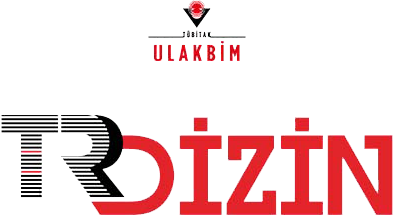
Bu eser Creative Commons Alıntı-GayriTicari-Türetilemez 4.0 Uluslararası Lisansı ile lisanslanmıştır.













Determination of doxorubicin amount conjugated to mPEG-b-PCL copolymer via pH sensitive hydrazone bond
Gülhan IŞIK1, Ayşen TEZCANER2, Nesrin HASIRCI3, Aysel KIZILTAY41Graduate Department Of Biotechnology, Middle East Technical University, Ankara, Turkey2Department Of Engineering Sciences, Middle East Technical University, Ankara, Turkey
3Tissue Engineering And Biomaterials Research Center, Near East University, Lefkosa, TRNC, Mersin 10, Turkey
4Central Laboratory, Middle East Technical University, Ankara, Turkey
INTRODUCTION: The aim of this study was to find the efficient medium to bind an anticancer drug, Doxorubicin (DOX), to a synthesized polymer, methoxy poly(ethylene glycol)-block-polycaprolactone (mPEG-b-PCL) via pH sensitive hydrazone bonds and to determine the amount of conjugated drug.
METHODS: DOX conjugation was carried out in two different media (dimethyl sulfoxide (DMSO) and methanol-trifluoroacetic acid (MeOH-TFA)). The amount of conjugated drug was determined with two different methods. One method was applied the dissolution of the conjugate in chloroform: methanol (Ch: MeOH, 1: 1 v/v) solution without considering pH responsiveness, and the other method was after breaking pH sensitive hydrazone bonds in acidic media (using three different media as 0.1 M hydrochloric acid (HCl), concentrated HCl (12 M HCl) and concentrated sulfuric acid (18.3 M H2SO4)).
RESULTS: The highest conjugation efficiency was obtained when the conjugation was achieved in MeOH-TFA solution, and for the polymer-drug conjugates after the treatment with concentrated sulfuric acid.
DISCUSSION AND CONCLUSION: It was concluded that, MeOH-TFA method was a good method for conjugation of DOX to mPEG-b-PCL copolymer, and H2SO4 (18.3 M) method was better than any other present in literature for determination of the amount of DOX linked to the polymer via hydrazone conjugation
Keywords: Doxorubicin, hydrazine bond, mPEG-b-PCL, trinitrobenzene sulfonic acid, drug conjugation
pH duyarlı hidrazon bağıyla mPEG-b-PCL kopolimerine konjuge edilen doksorubisin miktarının belirlenmesi
Gülhan IŞIK1, Ayşen TEZCANER2, Nesrin HASIRCI3, Aysel KIZILTAY41Orta Doğu Teknik Üniversitesi, Biyoteknoloji Bölümü, Ankara2Orta Doğu Teknik Üniversitesi, Mühendislik Bilimleri Bölümü, Ankara
3Yakın Doğu Üniversitesi, Doku Mühendisliği Ve Biyomalzeme Araştırma Merkezi, Lefkoşa, KKTC
4Orta Doğu Teknik Üniversitesi, Merkezi Laboratuvar, Ankara
GİRİŞ ve AMAÇ: Bu çalışmanın amacı, antikanser bir ilaç olan Doksorubisinin (DOX) sentezlenen metoksi poli(etilen glikol)-blok-polikaprolakton (mPEG-b-PCL) polimerine pH-duyarlı hidrazon bağları aracılığıyla bağlanabileceği etkin ortamı bulmak ve konjüge edilmiş ilaç miktarını belirlemektir.
YÖNTEM ve GEREÇLER: DOX konjügasyon işlemi iki farklı ortamda (dimetil sülfoksit (DMSO) ve methanol trifloroasetik asit (MeOH-TFA)) gerçekleştirilmiştir. Konjüge ilaç miktarı iki farklı yöntemle belirlenmiştir. Bir metot, ph duyarlılığını göz ardı ederek konjüge yapının kloroform: methanol (Ch: MeOH, 1: 1 v/v) çözeltisi içerisinde çözünmesi sonrasında, diğer metot pH’ya duyarlı hidrazon bağlarının asidik ortamda (0.1 M hidroklorik asit (HCl), derişik HCl (12 M HCl) ve derişik sülfürik asit (18.3 M H2SO4) olarak üç farklı ortamda) kırılması sonrasında uygulanmıştır.
BULGULAR: En yüksek konjugasyon verimliliği MeOH-TFA çözeltisi içerisinde konjugasyon sağlandığında ve polimer-ilaç konjugatları konsantre sülfürik asit ile muamele edildikten sonra elde edilmiştir.
TARTIŞMA ve SONUÇ: MeOH-TFA yönteminin DOX’un mPEG-b-PCL kopolimerine konjügasyonu için iyi bir yöntem olduğu ve H2SO4 (18.3 M) yönteminin hidrazon konjügasyonu yoluyla polimere bağlı DOX miktarının belirlenmesi için literatürde mevcut diğer yöntemlerden daha iyi olduğu bulunmuştur.
Anahtar Kelimeler: Doksorubisin, hidrazon bağı, mPEG-b-PCL, trinitrobenzen sülfonik asit, ilaç konjügasyonu
Manuscript Language: English
(771 downloaded)


